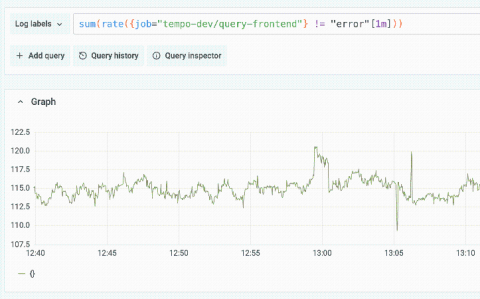Operations | Monitoring | ITSM | DevOps | Cloud
Logging
The latest News and Information on Log Management, Log Analytics and related technologies.
Analyze your logs quickly with suggested queries beta in Cloud Logging
Cloud Logging is a popular tool to help developers, operators, and other users identify and find the root cause of issues in their infrastructure. With features like the Logs Explorer, you can quickly and efficiently retrieve, view, and analyze logs. To help you get the most out of your logs, we’re excited to introduce suggested queries in Cloud Logging to help highlight important logs, so you can start analyzing and troubleshoot issues quickly.
Enhancing the DevOps Experience on Kubernetes with Logging
Keeping track of what’s going on in Kubernetes isn’t easy. It’s an environment where things move quickly, individual containers come and go, and a large number of independent processes involving separate users may all be happening at the same time. Container-based systems are by their nature optimized for rapid, efficient response to a heavy load of requests from multiple users in a highly abstracted environment and not for high-visibility, real-time monitoring.
Splunk Recognized as Value Leader in EMA Radar Report: AIOps, A Guide for Investing in Innovation
Splunk has been recognized as a Value Leader in EMA’s latest research, Radar Report: AIOps, A Guide for Investing in Innovation. Vendors were evaluated across three categories, with Splunk listed as a Value Leader in both ‘Incident, Performance, and Availability Management’ and ‘Business Impact and IT-To-Business Alignment’, as well as Strong Value in ‘Change Impact and Capacity Optimization’.
Essential Observability Techniques for Continuous Delivery
Observability is an indispensable concept in continuous delivery, but it can be a little bewildering. Luckily for us, there are a number of tools and techniques to make our job easier! One way to aid in improving observability in a continuous delivery environment is by monitoring and analyzing key metrics from builds and deploys. With tools such as Prometheus and their integrations into CI/CD pipelines, gathering and analysis of metrics is simple. Tracking these things early on is essential.
Full Observability with Your Node.js App
Javascript is a pretty prolific programming language, used daily by people visiting any number of websites and web applications. NodeJS, it’s server-side version, is also used all over the place. You’ll find it deployed as full application stacks to functions in things like AWS Lambda, or even as IoT processes with things like Johnny Five. So when we think about Observability in the context of a nodejs stack, how do we set it up and get the information flowing?
Planning Your Log Collection
Whether you are planning to use Graylog for security and threat hunting, IT Operations analysis and reporting, or any other use case, getting your logs into Graylog is essential. The process of log collection is sometimes a daunting task, especially if you are planning to collect massive amounts of data. But if you take a minute to answer some key questions before you begin, you can transform the log collection task from daunting to smooth sailing. Here we go with the questions...
Java Logging: Best Practices for Success with your Java Application
Java is used by at least 7.6 Million developers worldwide. Java logging has been a staple of the Java platform since day one, boasting extensive, resourceful documentation and rich API’s. The cornerstone of monitoring your application is efficient and widespread logging. At Coralogix, we know that logs have become one of the most important components of a modern monitoring function.
All the non-technical advantages of Loki: reduce costs, streamline operations, build better teams
Hi, I’m Owen, one of the Loki maintainers, and I’m putting proverbial pen to paper to convince you why Loki is important. And this isn’t because it scales (it does) or because I work at Grafana Labs (I do). It’s because of the oft-overlooked and underrepresented organizational benefits. Organizational benefits?! What is this, some sort of cult? Why are you avoiding the technicals? Whoa, whoa, whoa. Now, hold on. The technicals are still valid.
Secure Your Endpoints with ESET and Logz.io
Watching too many movies might give you the impression that cyber attacks are launched by well-funded masterminds able to control the internet at their whim. But really, successful attacks can be as simple as disguising some malicious software as a link to an often-used site, and tricking people into clicking it, known as phishing. The result is that many cyber attacks are carried out by taking advantage of unsuspecting end users.











